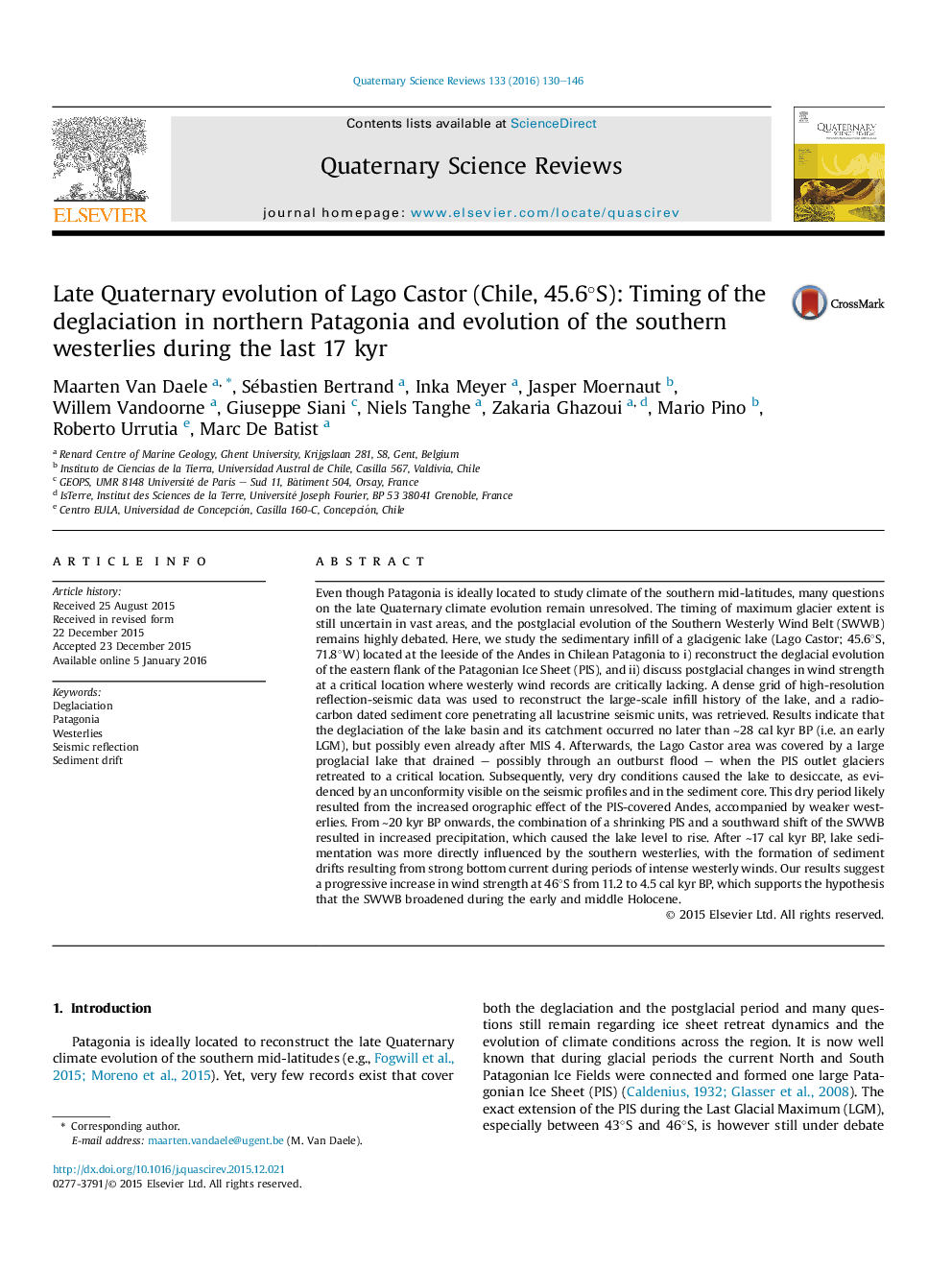| کد مقاله | کد نشریه | سال انتشار | مقاله انگلیسی | نسخه تمام متن |
|---|---|---|---|---|
| 6446151 | 1640802 | 2016 | 17 صفحه PDF | دانلود رایگان |
عنوان انگلیسی مقاله ISI
Late Quaternary evolution of Lago Castor (Chile, 45.6°S): Timing of the deglaciation in northern Patagonia and evolution of the southern westerlies during the last 17 kyr
دانلود مقاله + سفارش ترجمه
دانلود مقاله ISI انگلیسی
رایگان برای ایرانیان
کلمات کلیدی
موضوعات مرتبط
مهندسی و علوم پایه
علوم زمین و سیارات
زمین شناسی
پیش نمایش صفحه اول مقاله

چکیده انگلیسی
Even though Patagonia is ideally located to study climate of the southern mid-latitudes, many questions on the late Quaternary climate evolution remain unresolved. The timing of maximum glacier extent is still uncertain in vast areas, and the postglacial evolution of the Southern Westerly Wind Belt (SWWB) remains highly debated. Here, we study the sedimentary infill of a glacigenic lake (Lago Castor; 45.6°S, 71.8°W) located at the leeside of the Andes in Chilean Patagonia to i) reconstruct the deglacial evolution of the eastern flank of the Patagonian Ice Sheet (PIS), and ii) discuss postglacial changes in wind strength at a critical location where westerly wind records are critically lacking. A dense grid of high-resolution reflection-seismic data was used to reconstruct the large-scale infill history of the lake, and a radiocarbon dated sediment core penetrating all lacustrine seismic units, was retrieved. Results indicate that the deglaciation of the lake basin and its catchment occurred no later than â¼28 cal kyr BP (i.e. an early LGM), but possibly even already after MIS 4. Afterwards, the Lago Castor area was covered by a large proglacial lake that drained - possibly through an outburst flood - when the PIS outlet glaciers retreated to a critical location. Subsequently, very dry conditions caused the lake to desiccate, as evidenced by an unconformity visible on the seismic profiles and in the sediment core. This dry period likely resulted from the increased orographic effect of the PIS-covered Andes, accompanied by weaker westerlies. From â¼20 kyr BP onwards, the combination of a shrinking PIS and a southward shift of the SWWB resulted in increased precipitation, which caused the lake level to rise. After â¼17 cal kyr BP, lake sedimentation was more directly influenced by the southern westerlies, with the formation of sediment drifts resulting from strong bottom current during periods of intense westerly winds. Our results suggest a progressive increase in wind strength at 46°S from 11.2 to 4.5 cal kyr BP, which supports the hypothesis that the SWWB broadened during the early and middle Holocene.
ناشر
Database: Elsevier - ScienceDirect (ساینس دایرکت)
Journal: Quaternary Science Reviews - Volume 133, 1 February 2016, Pages 130-146
Journal: Quaternary Science Reviews - Volume 133, 1 February 2016, Pages 130-146
نویسندگان
Maarten Van Daele, Sébastien Bertrand, Inka Meyer, Jasper Moernaut, Willem Vandoorne, Giuseppe Siani, Niels Tanghe, Zakaria Ghazoui, Mario Pino, Roberto Urrutia, Marc De Batist,